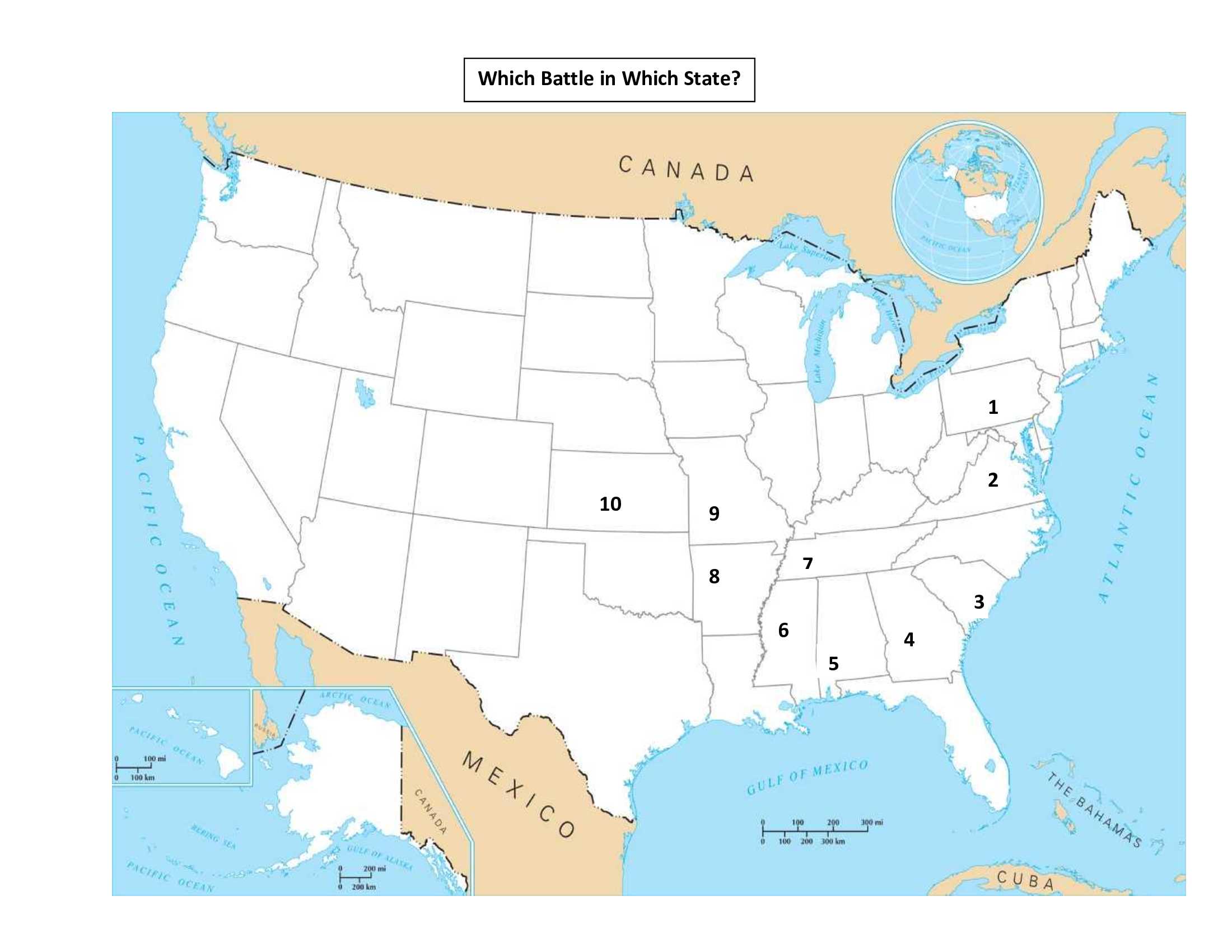
Which Battle In Which State? Trivia Quiz
The Civil War in the United States was a conflict which was fought in some way in nearly every state in the country at the time. Follow the numbers around the map and match the Civil War battle with the state in which it was fought.
A label quiz
by ponycargirl.
Estimated time: 3 mins.
